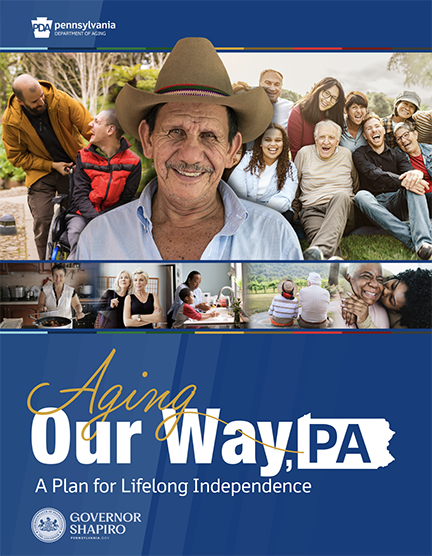AARP Hearing Center

Legislators in Harrisburg are deciding how much to spend on Aging Our Way, PA: A Plan for Lifelong Independence, the state’s first-ever master plan to improve services such as housing, transportation and health care for older adults. Gov. Josh Shapiro (D) has asked for $11.7 million to launch the 10-year plan. The General Assembly has until June 30 to set its budget.
The plan was partially shaped by AARP Pennsylvania’s efforts to make communities more livable for all ages. For more on the plan, see pa.gov/AgingOurWay. For more on AARP Livable Communities and its Network of Age-Friendly States and Communities, see aarp.org/livable. The Bulletin discussed the plan with Shapiro in February.
Four months into your new role as governor, you signed an executive order directing your Department of Aging to develop a master plan for aging. Why did you see a need for it?
I think it’s critically important that older Pennsylvanians are able to age with dignity here in our commonwealth. … Pennsylvania has a rapidly growing population of older adults, as well as older adults with disabilities. Consider this: Right now, 1 in 4 Pennsylvanians are over the age of 60. And by 2030, nearly 1 in 3 Pennsylvanians will be over the age of 60. Now is the time to plan for that.
The state increased its property tax and rent rebates for older people last year. The aging plan features additional initiatives to help Pennsylvanians age in place. Can you discuss those?
We want to invest more in the OPTIONS program, which allows people to live with dignity in their homes and still get the help that they need. We’re investing in the accessibility of public outdoor spaces for our seniors. We are investing in emergency housing for older Pennsylvanians and investing in home repair programs that support seniors as well.
Transportation surfaced frequently as a top concern during public comments for the plan. How will the proposed changes help older people?
I’m proud that to date, more than 20,000 Pennsylvanians participated in the [Aging Our Way] process and we’ve received nearly 4,000 comments. … A significant number … had to do with transportation needs here in Pennsylvania, and we know that that is critically important, providing public transportation so older Pennsylvanians can maintain their independence. … I’ve proposed an over $200 million investment in public transportation statewide that would include more funding for shared rides for seniors. … It could be a bus; it could be a van; it could be a carpool service that’s available to take seniors to medical appointments or to recreational outings [or] food shopping.
Pennsylvania struggles with a shortage of direct care workers and high turnover in the field. How is that addressed?
We want to invest in our workforce to make sure that there are enough support service personnel available to meet the needs of our seniors. One of the biggest challenges we have right now is that we don’t have enough support professionals. So we are trying to raise the [reimbursement rates] ... thus making the fields of caring for seniors more attractive to people to do that
work.
The state’s population is urban, suburban and rural. How does the plan address the varied needs those populations have?
We are mindful that—especially in our rural communities—it can be hard to access services, so we are identifying where there are holes in services, where there are greater needs, and making sure that those holes are filled and the needs are met. I will say that across the board we do a really good job in Pennsylvania looking out for our seniors, and I’m particularly proud of the fact that, according to the U.S. News & World Report, seven of the top 10 cities to retire in in America are in Pennsylvania.
What would success for this plan look like? What indicators would show that progress is being made?
To finalize this plan, to have it be top of mind for our governmental leaders and our seniors, and to have the funding and the services—over the next decade or more—follow recommendations that are made so that we can have smart policies and adequate funding in place to help our seniors age with dignity.
What is the mood of both Republicans and Democrats on the plan? Will this be a bipartisan effort?
I’ve received a lot of support from both Republicans and Democrats for this plan, and I hope that they will come together in this year’s budget and fund older Pennsylvanians and their needs. Look, when I went to the legislature last year and said we need to give our seniors a tax cut, they came together on a bipartisan basis and answered my calls for a tax cut for seniors. …And so, if past is prologue, then I’m quite optimistic about our ability to fund the needs of our seniors in this budget.
Is a resource guide part of the plan?
Yes, that’s part of the education and navigation component of the plan. Let me explain: It’s wonderful to have all of the different supports and options and resources for seniors. But if seniors don’t know about it, they’re not very helpful. And so a component of this plan is to work on informing our seniors about what is available to them in their respective communities.
Interview by Sarah Hollander, a freelance writer and former daily newspaper reporter in Cleveland who has written for the Bulletin for 15 years.































































